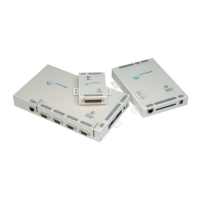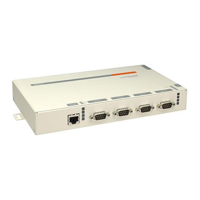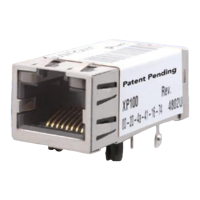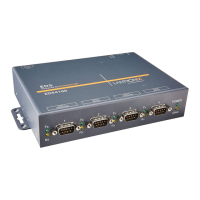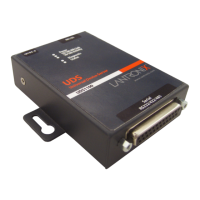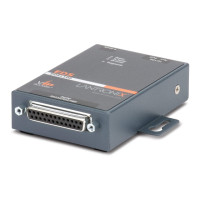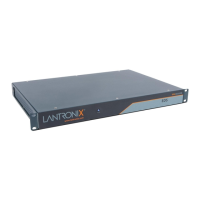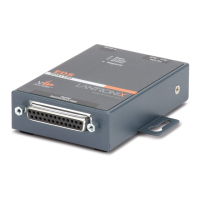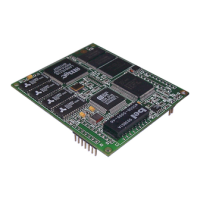3: Installation
SLC™ Console Manager User Guide 32
Figure 3-3 CAT 5 Cable Connection
Connecting to Network Ports
The SLC network ports, 10Base-T/100Base-TX, allow remote access to the attached devices and
the system administrative functions. Use a standard RJ45-terminated Category 5 cable to connect
to the network port.
Note: One possible use for the two Ethernet ports is to have one port on a private,
secure network, and the other on an unsecured network.
Connecting to Terminals
The console port is for local access to the SLC console manager and the attached devices. You
may attach a dumb terminal or a computer with terminal emulation to the console port. The SLC
console port uses RS-232C protocol and supports VT100 emulation. The default baud rate is
9600.
To connect the console port to a terminal or computer with terminal emulation, Lantronix offers
optional adapters that provide a connection between an RJ45 jack and a DB9 or DB25
connector. The console port is configured as DTE. For more information, see Appendix E:
Adapters and Pinouts on page 324 and go to the Lantronix web site at www.lantronix.com/
support and click Cable/Adapter Lookup on the Support menu.
To connect a terminal:
1. Attach the Lantronix adapter to your terminal (use PN 200.2066A adapter) or your PC's serial
port (use PN 200.2070A adapter).
2. Connect the Cat 5 cable to the adapter, and connect the other end to the SLC console port.
3. Turn on the terminal or start your computer’s communication program (e.g., HyperTerminal for
Windows).
4. Once the SLC console manager is running, press Enter to establish connection. You should
see the model name and a login prompt on your terminal. You are connected.
Power
The SLC device consumes less than 20W of electrical power.
AC Input
The SLC console manager has a universal auto-switching AC power supply. The power supply
accepts AC input voltage between 100 and 240 VAC with a frequency of 50 or 60 Hz. Rear-
